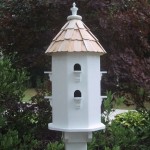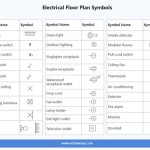Does White Vinegar Effectively Eliminate Plant Gnats and Fruit Flies?
Plant gnats and fruit flies are common household pests, known for their rapid reproduction rates and annoying presence. Understanding effective methods for their control is crucial for maintaining a healthy indoor environment and preventing damage to houseplants. White vinegar is frequently suggested as a natural and readily available solution for managing these pests. This article will explore the efficacy of white vinegar against plant gnats and fruit flies, examining its mechanisms of action, limitations, and alternative strategies for a comprehensive pest management approach.
Plant gnats, also known as fungus gnats, are small, dark-colored flies that are attracted to moist soil and decaying organic matter. Their larvae feed on fungi and plant roots in the soil, potentially damaging young plants and seedlings. Fruit flies, on the other hand, are attracted to ripe, fermenting fruits and vegetables. They are drawn to sugary substances and can quickly infest kitchens and other areas where food is stored.
White vinegar, a dilute solution of acetic acid, possesses properties that may be useful in controlling these pests. Its acidic nature can be lethal to insects and disrupts their biological processes. The strong odor of vinegar can also serve as an attractant, luring insects into traps. However, the effectiveness of white vinegar as a sole control method is subject to certain conditions and limitations.
White Vinegar as an Attractant and Insecticide
The primary mechanism through which white vinegar works is acting as an attractant and a mild insecticide. Both plant gnats and fruit flies are drawn to the scent of fermentation and sugars. White vinegar, particularly apple cider vinegar, mimics this attractant profile, enticing these insects into traps. When insects come into contact with the vinegar, the acetic acid can disrupt their cellular function and lead to their demise.
To employ white vinegar as a trap, a common method involves pouring a small amount of vinegar into a shallow dish or jar. A few drops of dish soap can be added to the vinegar to reduce its surface tension. This prevents the insects from escaping once they land on the liquid. The dish should be placed near the infested plants or areas where fruit flies are prevalent.
The effectiveness of this method relies on the insects being more attracted to the vinegar than to their original food source or breeding grounds. In cases of severe infestations or readily available alternate sources of attraction, the efficacy of white vinegar traps may be diminished.
Acetic acid, the active component of white vinegar, can indeed be toxic to insects. However, the concentration in household white vinegar is typically only around 5%, making it a relatively mild insecticide. Direct contact is usually necessary for it to be effective. Some insects may be able to avoid the vinegar, or tolerate small amounts, limiting the overall impact of this method.
Moreover, white vinegar only targets the adult insect population. It does not address the larvae residing in the soil or other breeding sites. Therefore, relying solely on vinegar traps may only suppress the adult population temporarily without eradicating the source of the problem.
Limitations of White Vinegar for Gnat and Fruit Fly Control
Despite its potential as a component of pest management, white vinegar presents several limitations. As previously mentioned, it primarily targets adult insects and does not eliminate larvae. This means that without addressing the breeding grounds, the infestation will likely persist or recur.
Another limitation is that white vinegar may not be the most attractive option in all situations. Fruit flies, in particular, may be more attracted to overripe fruit or other sugary substances. If these sources are readily available, the fruit flies may prefer them over the vinegar trap. Similarly, plant gnats may be more attracted to overly moist soil or fungal growth than to vinegar.
The strength of the vinegar plays a role in its effectiveness. While undiluted white vinegar will be more effective at killing insects, it is also more likely to repel them with its strong odor. Diluted vinegar, on the other hand, might be more appealing but less potent. Finding the right balance can be challenging and may vary depending on the particular pest and the surrounding environment.
Furthermore, white vinegar is not a selective insecticide. It can also attract and potentially harm beneficial insects that may be present in the area. This is particularly relevant for outdoor use. While indoor use minimizes the risk, it is still a consideration to avoid unintentionally harming beneficial insects that might enter the home.
Finally, the efficacy of white vinegar can be influenced by environmental factors such as temperature, humidity, and airflow. High humidity may dilute the vinegar’s concentration, while strong airflow may disperse its scent, reducing its attractiveness to insects. Therefore, maintaining the traps and replenishing the vinegar regularly is important.
Alternative and Complementary Strategies for Pest Management
Given the limitations of white vinegar, a more comprehensive approach to pest management is often necessary. This involves addressing the source of the infestation, implementing preventive measures, and utilizing a combination of control methods. Several alternative and complementary strategies can be employed alongside or instead of white vinegar traps.
For plant gnat control, the primary focus should be on managing soil moisture. Overwatering creates an ideal environment for fungal growth, which attracts plant gnats and provides them with a food source. Allowing the top inch or two of soil to dry out between waterings can significantly reduce the attractiveness of the soil to these pests. In addition, ensuring adequate drainage and using well-draining potting mix can help prevent waterlogged conditions.
Another effective strategy for plant gnat control is using a layer of sand or gravel on top of the soil. This creates a physical barrier that prevents the gnats from laying their eggs in the soil. Similarly, sticky traps placed near the plants can capture adult gnats, reducing their numbers and preventing them from reproducing.
For fruit fly control, the focus should be on eliminating potential food sources. This includes promptly cleaning up spills, storing fruits and vegetables in sealed containers, and regularly emptying trash cans. Rinsing out empty bottles and cans before discarding them can also help prevent fruit flies from being attracted to leftover sugary residues.
In addition to these preventive measures, several other control methods can be used. Flypaper or sticky traps can be effective in capturing adult fruit flies. Insecticidal sprays or foggers can also be used, but should be applied with caution and according to the manufacturer's instructions. Introducing beneficial nematodes to the soil can help control plant gnat larvae. These microscopic worms feed on the larvae, reducing their population and preventing them from damaging plant roots.
Ultimately, the most effective approach to managing plant gnats and fruit flies involves a combination of strategies. This may include using white vinegar traps to capture adult insects, addressing the breeding grounds through proper soil management or sanitation practices, and utilizing other control methods such as sticky traps or beneficial nematodes. By integrating these techniques, it is possible to achieve long-term control of these pests and maintain a healthy indoor environment.
In conclusion, while white vinegar can be a useful tool in managing plant gnats and fruit flies, it is not a standalone solution. Its effectiveness is limited by its primary focus on adult insects and its susceptibility to environmental factors. A comprehensive approach that addresses the source of the infestation, implements preventive measures, and utilizes a combination of control methods is essential for achieving long-term pest management success.

How To Get Rid Of Fruit Flies Fungus Gnats In Plants

Get Rid Of Gnats Once And For All With White Vinegar

How To Get Rid Of Gnats In Houseplants

How To Get Rid Of Gnats In Your Home Trusted Since 1922

How To Get Rid Of Fruit Flies Fungus Gnats In Plants
How To Get Rid Of Gnats Drain Flies Fruit And Fungus

Getting Rid Of The Fungus Gnats Among Us Good Earth Plants

Get Rid Of Fruit Flies Drain And Fungus Gnats

How To Get Rid Of Fruit Flies

How To Get Rid Of Fruit Flies Fungus Gnats In Plants








